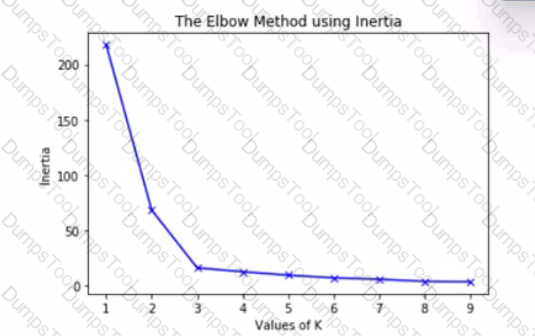Which of the following text vectorization methods is appropriate and correctly defined for an English-to-Spanish translation machine?
Which of the following describes a neural network without an activation function?
For a particular classification problem, you are tasked with determining the best algorithm among SVM, random forest, K-nearest neighbors, and a deep neural network. Each of the algorithms has similar accuracy on your data. The stakeholders indicate that they need a model that can convey each feature's relative contribution to the model's accuracy. Which is the best algorithm for this use case?
Which of the following tools would you use to create a natural language processing application?
An AI practitioner incorporates risk considerations into a deployment plan and decides to log and store historical predictions for potential, future access requests.
Which ethical principle is this an example of?
Which of the following scenarios is an example of entanglement in ML pipelines?
Which of the following items should be included in a handover to the end user to enable them to use and run a trained model on their own system? (Select three.)
Which two of the following decrease technical debt in ML systems? (Select two.)

The graph is an elbow plot showing the inertia or within-cluster sum of squares on the y-axis and number of clusters (also called K) on the x-axis, denoting the change in inertia as the clusters change using k-means algorithm.
What would be an optimal value of K to ensure a good number of clusters?
Which of the following best describes distributed artificial intelligence?
An organization sells house security cameras and has asked their data scientists to implement a model to detect human feces, as distinguished from animals, so they can alert th customers only when a human gets close to their house.
Which of the following algorithms is an appropriate option with a correct reason?
You train a neural network model with two layers, each layer having four nodes, and realize that the model is underfit. Which of the actions below will NOT work to fix this underfitting?
You are building a prediction model to develop a tool that can diagnose a particular disease so that individuals with the disease can receive treatment. The treatment is cheap and has no side effects. Patients with the disease who don't receive treatment have a high risk of mortality.
It is of primary importance that your diagnostic tool has which of the following?
Which of the following is a type 1 error in statistical hypothesis testing?
Which of the following is the primary purpose of hyperparameter optimization?
A change in the relationship between the target variable and input features is
Which of the following approaches is best if a limited portion of your training data is labeled?
Which of the following statements are true regarding highly interpretable models? (Select two.)